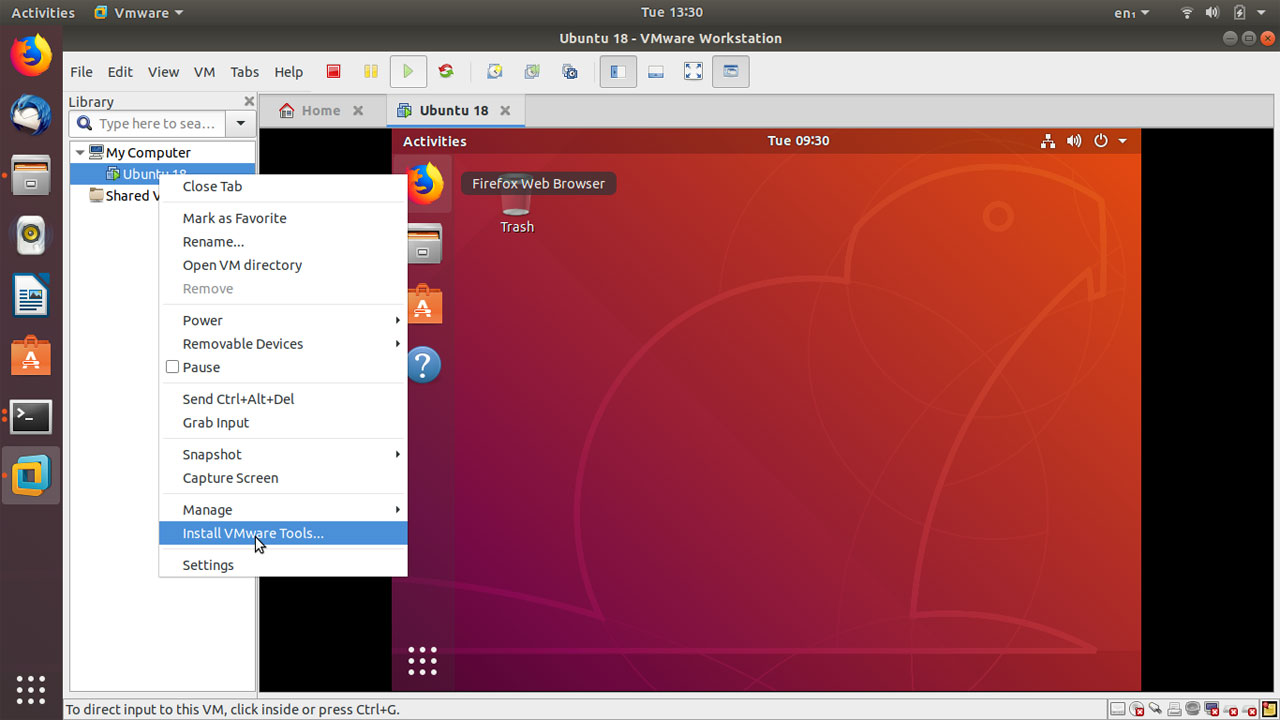
- Setting up a ubuntu virtualmachine on ubuntu desktop install#
- Setting up a ubuntu virtualmachine on ubuntu desktop update#
- Setting up a ubuntu virtualmachine on ubuntu desktop code#
- Setting up a ubuntu virtualmachine on ubuntu desktop Pc#
- Setting up a ubuntu virtualmachine on ubuntu desktop windows#
Similarly, if you had selected "3rd Party Components" when prompted during installing Ubuntu itself, you may already have the OpenAL libraries installed.
Setting up a ubuntu virtualmachine on ubuntu desktop install#
This is installed by default in Ubuntu 18, but might not be there if you have customised your install (or may not be installed by default in other distros), so be aware you might need to install this manually also. Įxtra note: GameMaker versions 2.2.3 and above also require the "nproc" package to be installed. If running the command " ffmpeg -version" returns "ffmpeg version 3.x.x", then use the command " sudo add-apt-repository ppa:savoury1/ffmpeg4" followed by " sudo apt-get install ffmpeg" once more. If you're on the older ffmpeg, then you won't hear any audio in your games after you have built them. Ubuntu 18 users: One very important step is to confirm which version of ffmpeg you have just installed - late 2021 and into 2022 releases onwards of GMS2 require a v4.x package. Where you replace with each of the following (individually) and run the apt command repeatedly until you have installed all of them: This is done by using:įollowing this, you can now install the packages listed by the following command:
Setting up a ubuntu virtualmachine on ubuntu desktop update#
Then we need to use the command apt to get the packages which are required to compile and run games.įirst, you should update the records of the repositories so you can get access to the latest versions of the packages. Click on it to open it and you should see a command prompt something like the one shown below: To do this, you should open Terminal, which can be found by clicking on the Dashboard icon and then simply searching for the "Terminal" application. Once you have a Ubuntu installation ready, you will need to install the development libraries/tools required during builds. NOTE: Other distros can be used for building projects and running games made with GameMaker, but, again, this is not officially supported. You can compile with Ubuntu running on a Virtual Machine, but this is not officially supported and may not give great performance anyway, so if you have any issues you will need to investigate your setup yourself. You should install the OS on a separate physical computer for use when building your game projects. If you still need Ubuntu 18.04 LTS (please consider just updating your GM instead!): To compile your game using either the VM or YYC however, you will first need to set up your Devices so that GameMaker can communicate with your Ubuntu machine. The performance of this target is less optimised than YYC, but it is faster to compile and offers the ability to run in debug mode (when using YYC the debugger will not start). The YYC target however, gives a much greater optimisation (and corresponding performance boost) especially with logic-heavy games, but large projects can take some time to compile.
Setting up a ubuntu virtualmachine on ubuntu desktop code#
The VM option will build your game and use interpreted code within a special YoYo Runner.
Setting up a ubuntu virtualmachine on ubuntu desktop Pc#
Other distros may also differ in their setup.Īfter installing and running GameMaker on your PC or Mac you can specifically target building for Ubuntu using the Target Manager window opened by clicking the target button in the top right of the main window:įor the Ubuntu target platform you can see that there are two output options: We do not recommend trying to use newer versions of Ubuntu than we claim support for on that page, as the install instructions could differ from what this guide contains.


Please see the Ubuntu section of our Required SDKs FAQ for current information on which version(s) of Ubuntu you should be using when making your game builds, as this can vary according to the version of GameMaker you're using.
Setting up a ubuntu virtualmachine on ubuntu desktop windows#
GameMaker Indie subscription and above come with the three PC export platforms: Windows, Mac and Ubuntu. In this article we give the required steps to get the Ubuntu platform up and running in both the Windows and Mac IDEs.


 0 kommentar(er)
0 kommentar(er)
